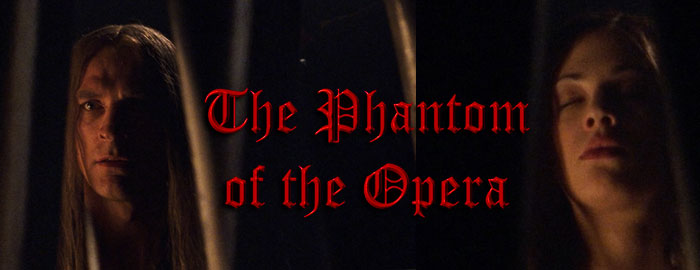
Color, 1998, 103 mins. 40 secs.
Directed by Dario Argento
Starring Julian Sands, Asia Argento, Andrea di Stefano, Nadia Rinaldi
Scorpion Releasing (Blu-ray) (US RA HD), ELEA-Media (Blu-ray & DVD) (Germany RB/R2 HD/PAL), Medusa (DVD) (Italy R2 PAL), A-Pix (US R1 NTSC), TFI (France R2 PAL) / WS (1.85:1) (16:9)
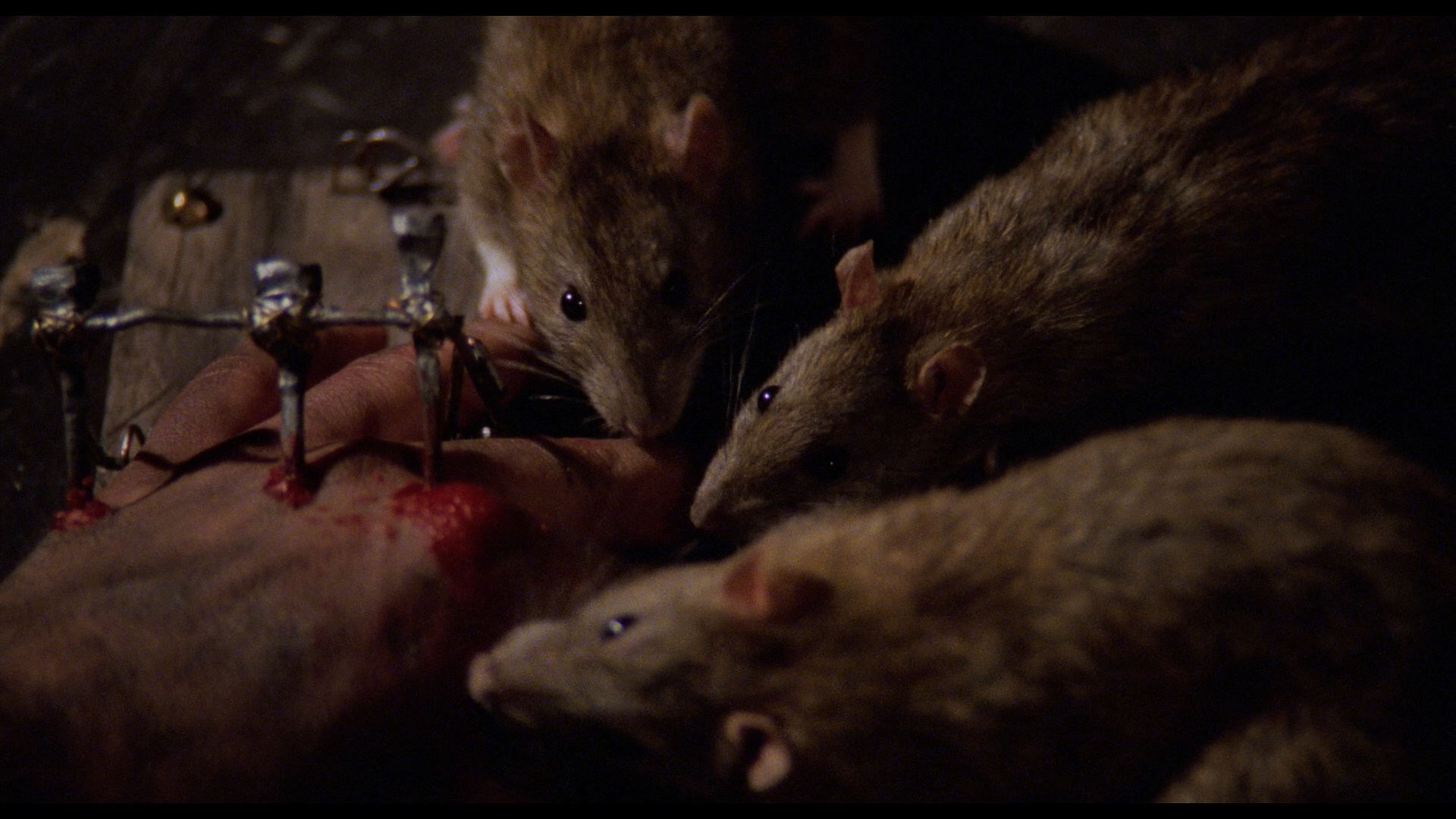 first Italian adaptation
first Italian adaptation 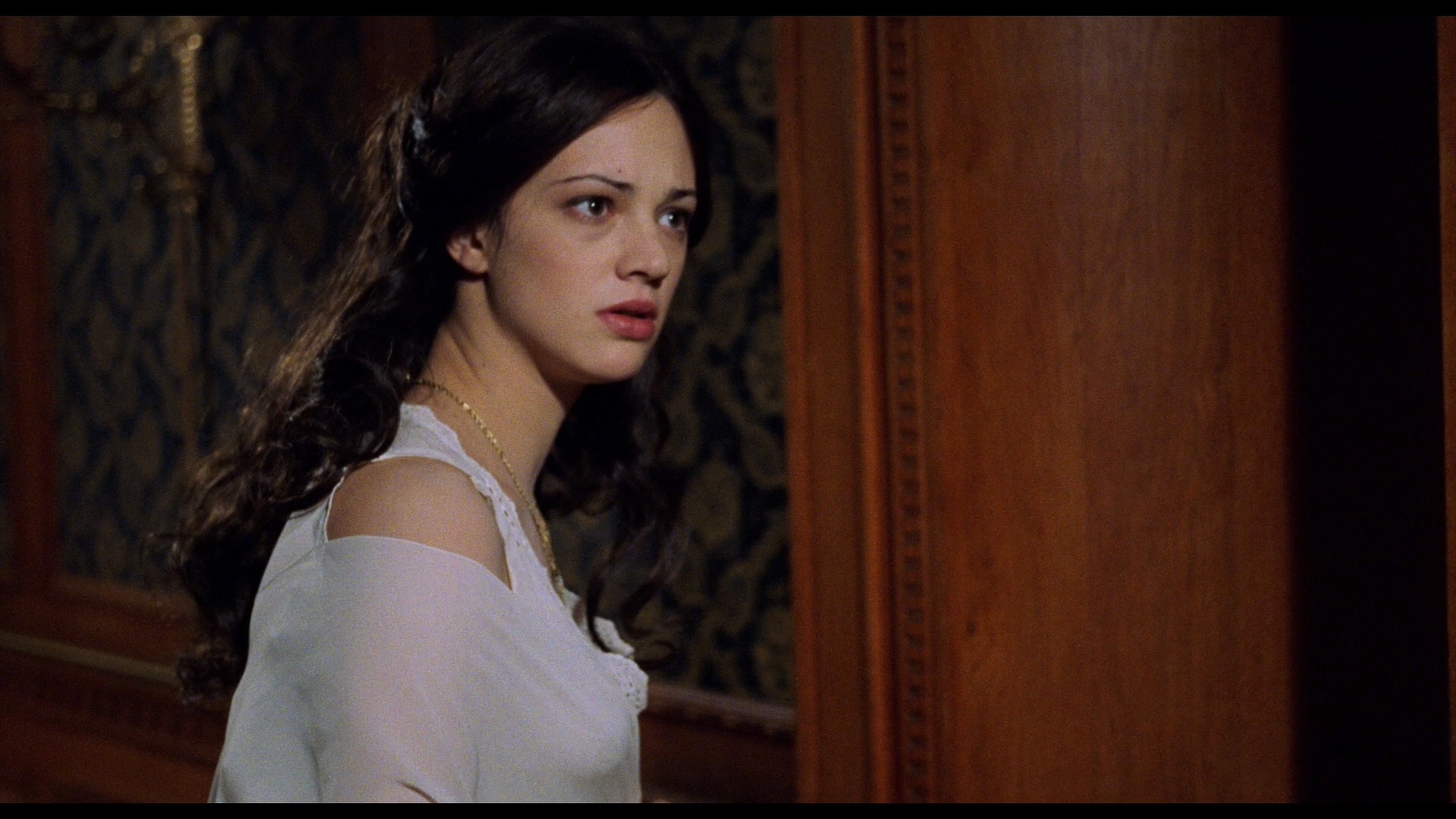 of the familiar Gaston Leroux story, The Phantom of the Opera marked a deliberately calculated attempt to break into the international horror market with what seemed to be a "sure thing." Unfortunately a chilly critical reception overseas prevented it from finding an audience, leaving director Dario Argento to turn back to his familiar giallo formula. While the film's less than stellar reception is understandable, it does offer mild rewards for seasoned Italian cinema fans and isn't quite the shambling debacle one might be led to fear. After a brief prologue in which a rejected infant is dumped into a Parisian river and saved inside the sewers by hordes of rats (shades of Batman Returns), the film begins in 1877 at the Paris Opera House, where young Christine (Asia Argento) works as a chorus girl in the latest production. When he's not busy killing nosy construction workers and treasure seeking interlopers, the mysterious phantom (Sands), infatuated with Christine's voice, uses his telepathic powers to seduce the willing ingénue and allow her to supplant the tempestuous diva, Carlotta (Rinaldi). Meanwhile the exotic Count Raoul de Chagney (di Stefano) reveals his own designs on Christine and takes it up himself to free her from the romantic but irretrievably psychopathic phantom.
of the familiar Gaston Leroux story, The Phantom of the Opera marked a deliberately calculated attempt to break into the international horror market with what seemed to be a "sure thing." Unfortunately a chilly critical reception overseas prevented it from finding an audience, leaving director Dario Argento to turn back to his familiar giallo formula. While the film's less than stellar reception is understandable, it does offer mild rewards for seasoned Italian cinema fans and isn't quite the shambling debacle one might be led to fear. After a brief prologue in which a rejected infant is dumped into a Parisian river and saved inside the sewers by hordes of rats (shades of Batman Returns), the film begins in 1877 at the Paris Opera House, where young Christine (Asia Argento) works as a chorus girl in the latest production. When he's not busy killing nosy construction workers and treasure seeking interlopers, the mysterious phantom (Sands), infatuated with Christine's voice, uses his telepathic powers to seduce the willing ingénue and allow her to supplant the tempestuous diva, Carlotta (Rinaldi). Meanwhile the exotic Count Raoul de Chagney (di Stefano) reveals his own designs on Christine and takes it up himself to free her from the romantic but irretrievably psychopathic phantom. impaling and a Fulciesque tongue-ripping. In many respects Phantom marks a progression of ideas Argento introduced with The Stendhal Syndrome; most obviously, his murderer is
impaling and a Fulciesque tongue-ripping. In many respects Phantom marks a progression of ideas Argento introduced with The Stendhal Syndrome; most obviously, his murderer is 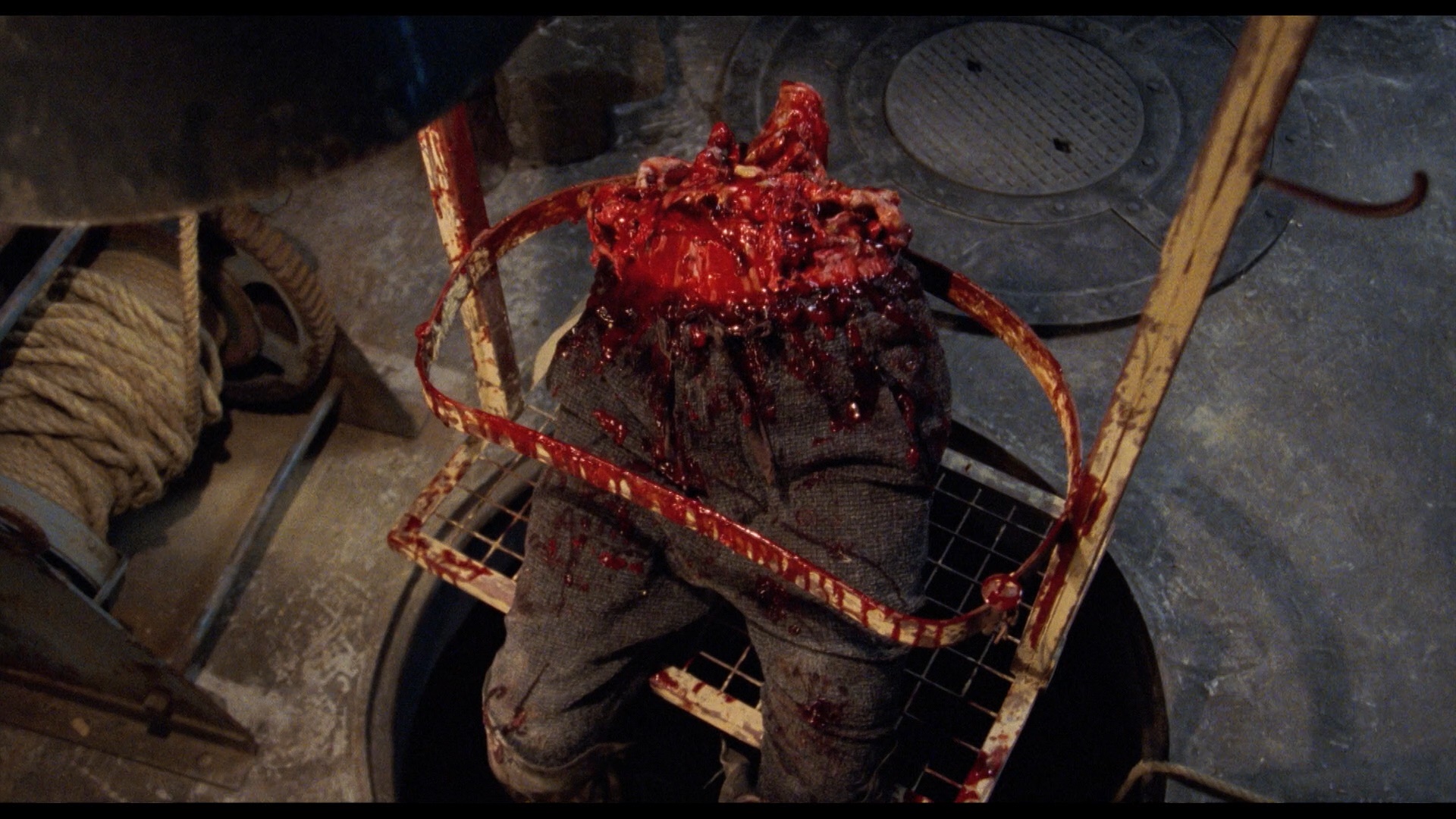 unmasked right from the beginning and is far more sexualized than the usual black-gloved serial killer. Once again he utilizes odd bursts of CGI, represented here by a floating Christine in the clouds(?) and the bizarre image of naked childish bodies transfixed in a giant rat trap. Unlike Stendhal, this film benefits greatly from the presence of the actors' original voices, making it far more accessible and easy on the ears. Roman Polanski's favorite screenwriter, Gérard Brach, collaborated with Argento on the screenplay, imbuing it with the same delirious, overripe exchanges which characterized Bitter Moon. The unusual locales are generally interesting and well handled, making this a more successful and interesting foray into Parisian period horror than Argento's producing effort, the disappointing Wax Mask.
unmasked right from the beginning and is far more sexualized than the usual black-gloved serial killer. Once again he utilizes odd bursts of CGI, represented here by a floating Christine in the clouds(?) and the bizarre image of naked childish bodies transfixed in a giant rat trap. Unlike Stendhal, this film benefits greatly from the presence of the actors' original voices, making it far more accessible and easy on the ears. Roman Polanski's favorite screenwriter, Gérard Brach, collaborated with Argento on the screenplay, imbuing it with the same delirious, overripe exchanges which characterized Bitter Moon. The unusual locales are generally interesting and well handled, making this a more successful and interesting foray into Parisian period horror than Argento's producing effort, the disappointing Wax Mask. 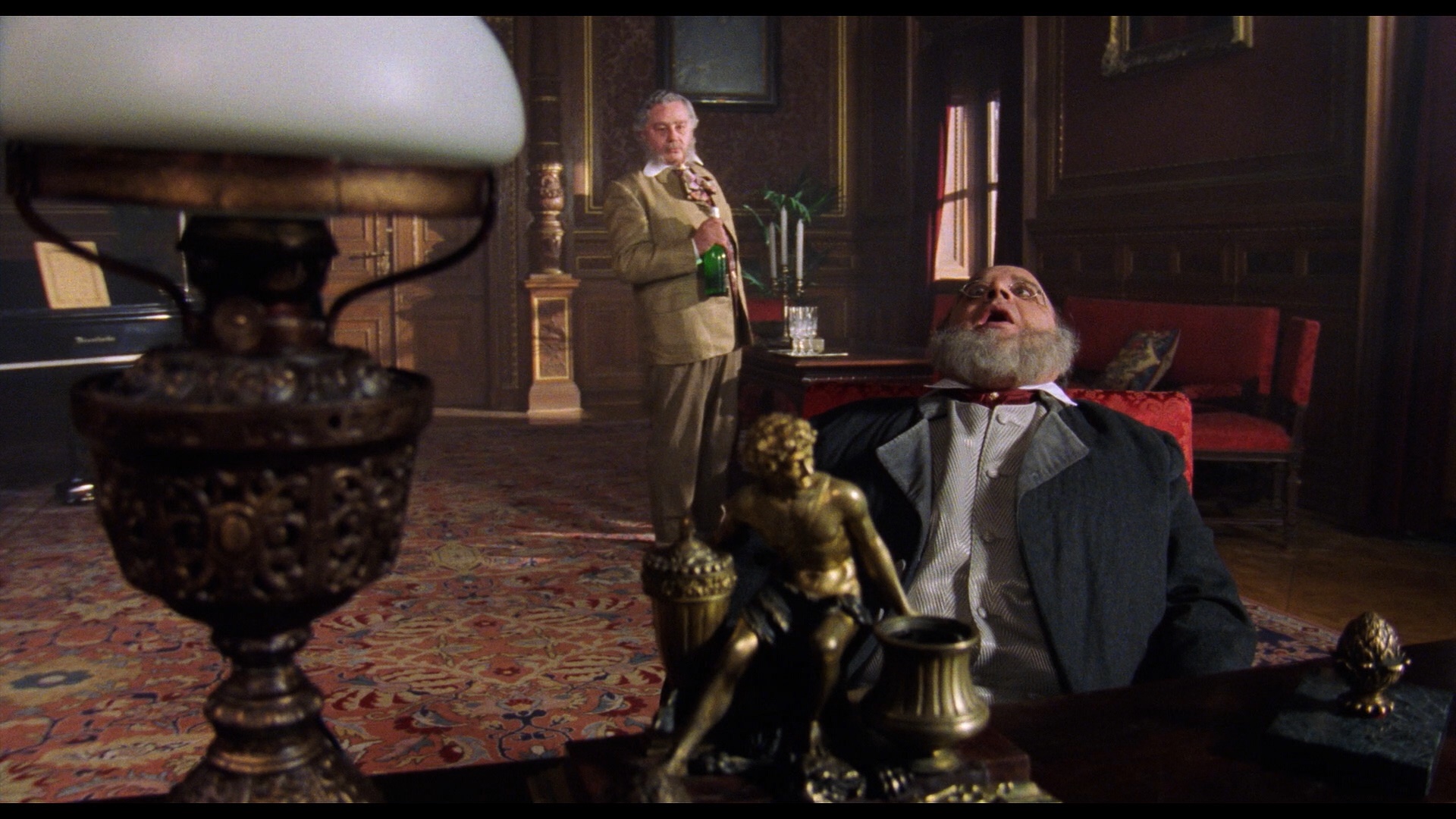 apparently decided to have fun and injected the film with far more humor
apparently decided to have fun and injected the film with far more humor 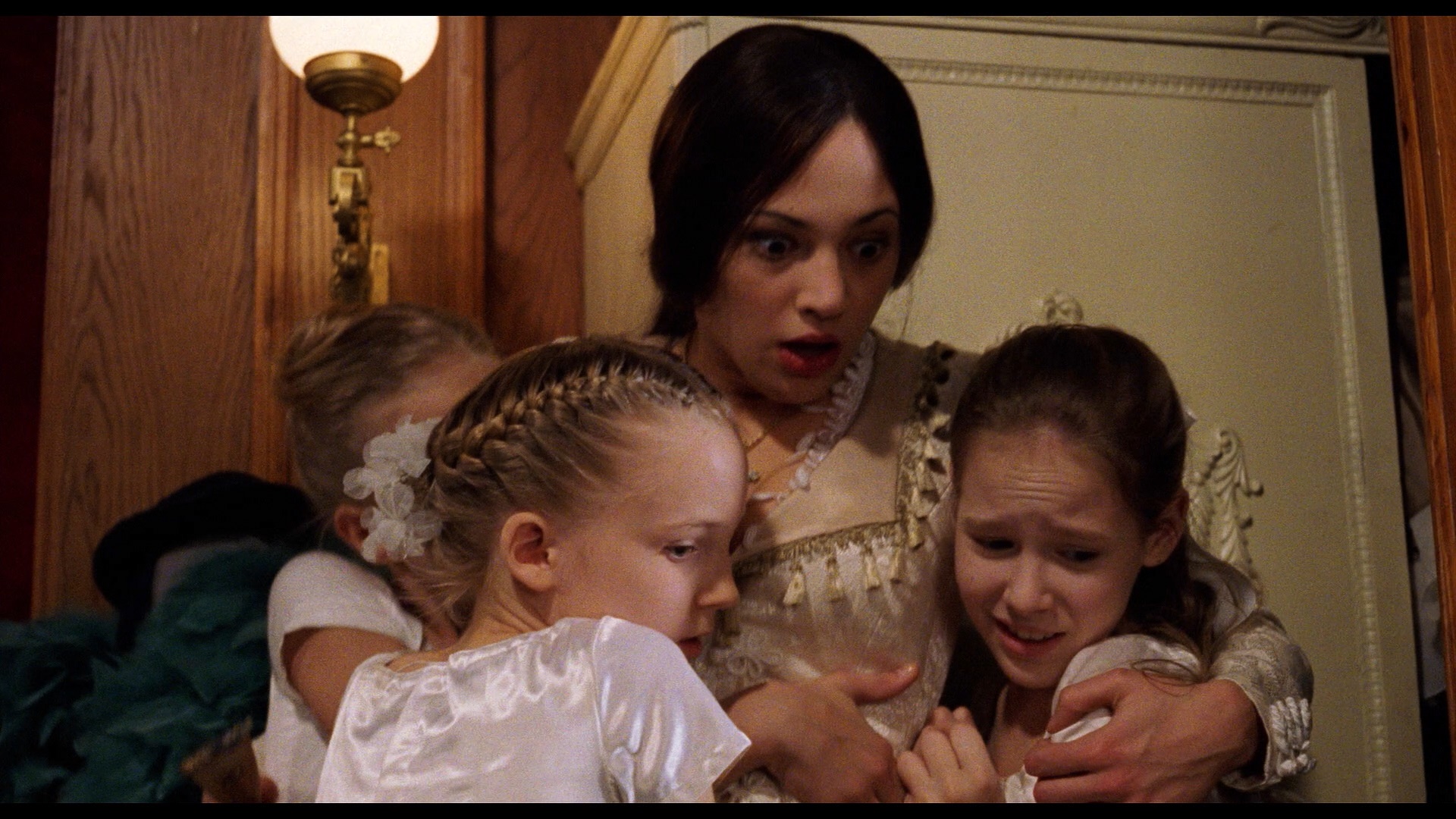 than people expected. The Leroux novel is indeed surprisingly witty, but horror fans are understandably confused by this approach. With its emphasis of bizarre gimmickry (the rat-catching machine), grotesque faces, and weird non sequitur humor, this Phantom more often resembles a Jeunet and Caro film, sort of a gory City of Lost Children. The film abounds with bizarre, potentially laughable moments: an unexpected visit by Raoul to an Eastern bathhouse (complete with tacky frontal nudity) in which he envisions Christine as a wine-dribbling whore; the phantom obtaining sexual communion with the rats whom he regards as his family; and the graphic chandelier dropping, a scene reminiscent of the Opera raven attack but rendered with more casual sadism. Sands is largely ineffectual in his moping Boxing Helena mode, and lovely Asia serves more as window dressing through most of the running time. (Also, look for Coralina Cataldi Tassoni, the ill-fated wardrobe mistress from Opera, reprising her role here.) That said, the Italian version of this film is significantly superior with Sands in particular voiced with much more menace and sensuality than the actor's natural reedy intonations. Acting quibbles aside, the romantic and sexualized elements provide some points of interest, with Christine experiencing a similar personality dualism as Stendhal's Anna, represented here by the temptations of two very different men ("I may have fallen in love with them both"). Once again Argento provides a wistful, sad, but ultimately merciful coda for his daughter, complete with her literally running towards the light. Ultimately, this is the most positive and heartfelt rendition of the tale since
than people expected. The Leroux novel is indeed surprisingly witty, but horror fans are understandably confused by this approach. With its emphasis of bizarre gimmickry (the rat-catching machine), grotesque faces, and weird non sequitur humor, this Phantom more often resembles a Jeunet and Caro film, sort of a gory City of Lost Children. The film abounds with bizarre, potentially laughable moments: an unexpected visit by Raoul to an Eastern bathhouse (complete with tacky frontal nudity) in which he envisions Christine as a wine-dribbling whore; the phantom obtaining sexual communion with the rats whom he regards as his family; and the graphic chandelier dropping, a scene reminiscent of the Opera raven attack but rendered with more casual sadism. Sands is largely ineffectual in his moping Boxing Helena mode, and lovely Asia serves more as window dressing through most of the running time. (Also, look for Coralina Cataldi Tassoni, the ill-fated wardrobe mistress from Opera, reprising her role here.) That said, the Italian version of this film is significantly superior with Sands in particular voiced with much more menace and sensuality than the actor's natural reedy intonations. Acting quibbles aside, the romantic and sexualized elements provide some points of interest, with Christine experiencing a similar personality dualism as Stendhal's Anna, represented here by the temptations of two very different men ("I may have fallen in love with them both"). Once again Argento provides a wistful, sad, but ultimately merciful coda for his daughter, complete with her literally running towards the light. Ultimately, this is the most positive and heartfelt rendition of the tale since  Terence Fisher's
Terence Fisher's 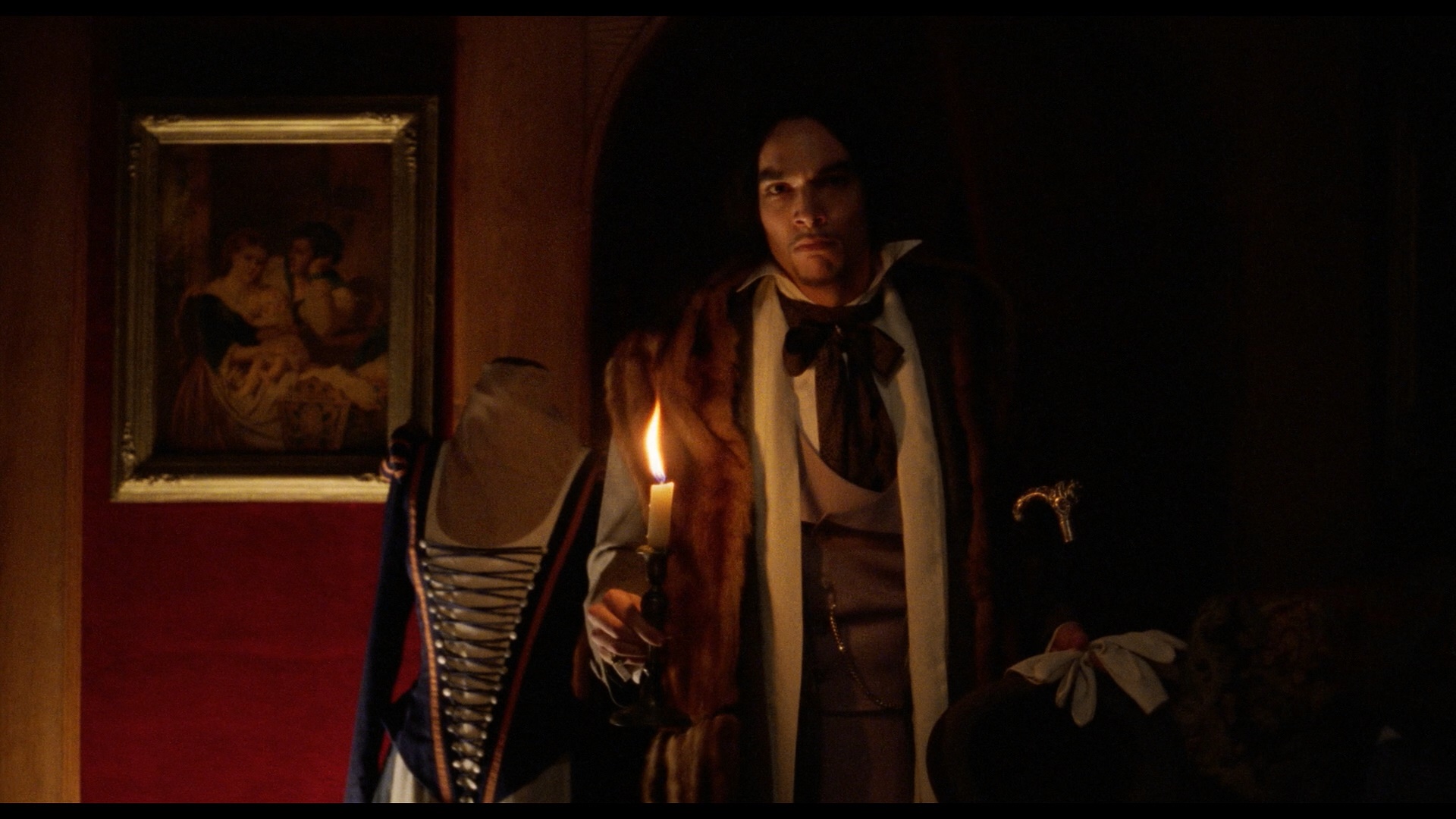 underrated Hammer version back in 1962.
underrated Hammer version back in 1962.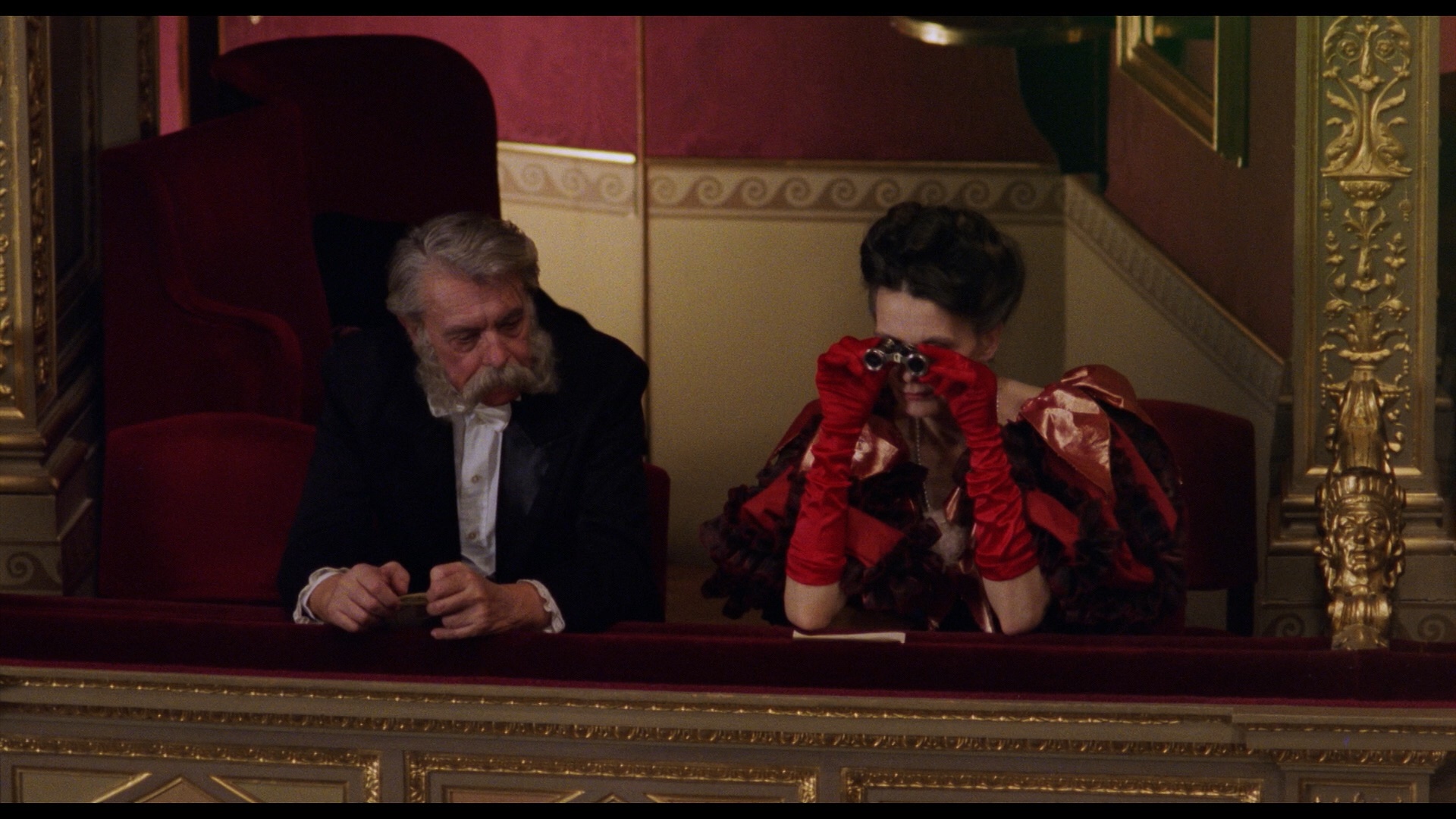 and the more elegant Italian track with optional English or
and the more elegant Italian track with optional English or  Italian subtitles, while also porting over most of the extras from the U.S. disc as well. Also, the jump cuts are thankfully absent. On the other hand, the censored French DVD omits the bathhouse footage and, despite an attractive transfer, is best avoided.
Italian subtitles, while also porting over most of the extras from the U.S. disc as well. Also, the jump cuts are thankfully absent. On the other hand, the censored French DVD omits the bathhouse footage and, despite an attractive transfer, is best avoided.
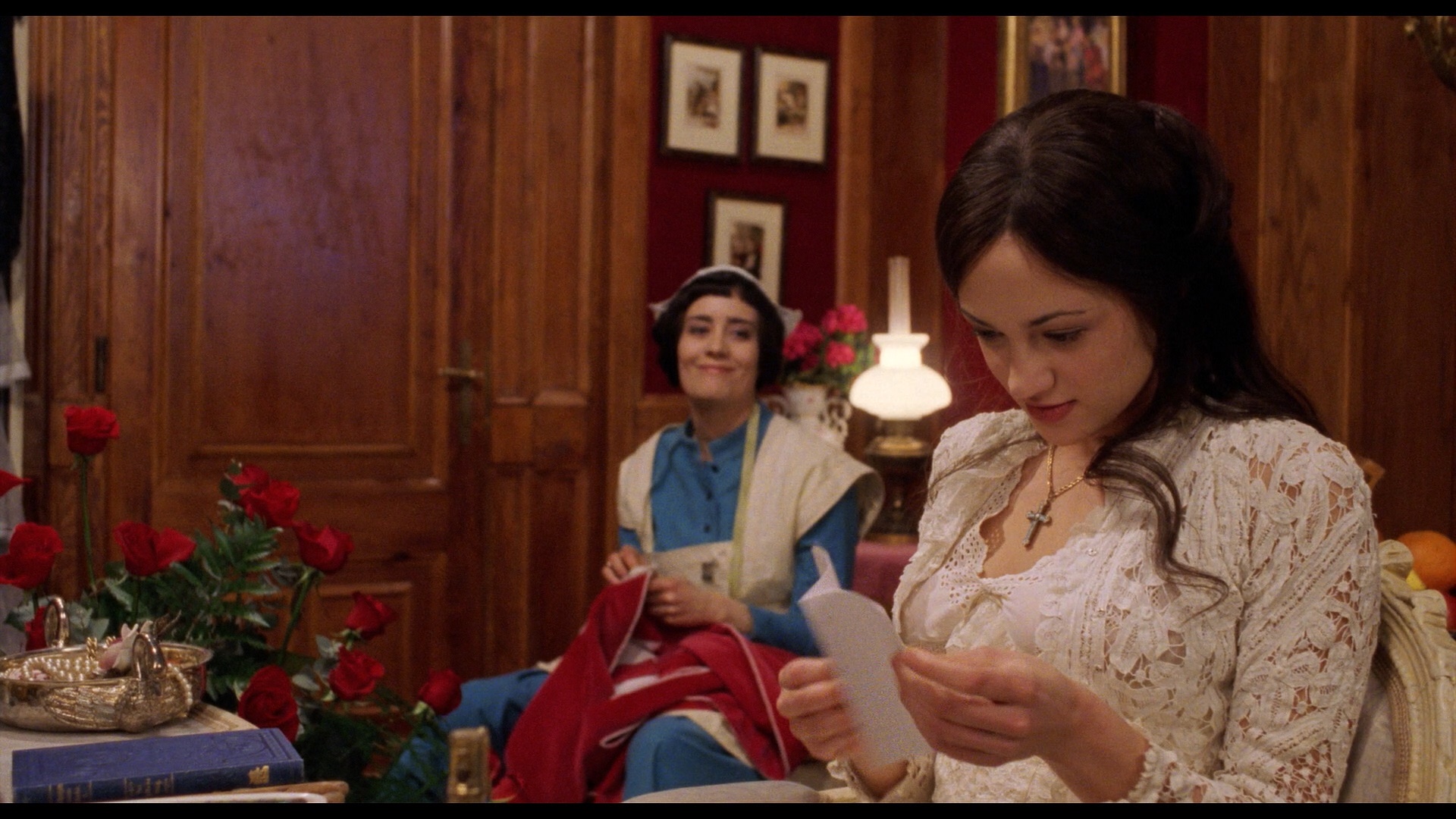 obviously can't be assessed here, but hopefully listeners will enjoy it. The three video extras kick off with "Behind the Red Curtain"
obviously can't be assessed here, but hopefully listeners will enjoy it. The three video extras kick off with "Behind the Red Curtain"  (18m7s), a new Argento interview by Freak-o-Rama with the legendary director chatting about his childhood discovery of the Rains version, the inspiration for the rat angle, the shooting in Budapest, the eventual casting of Asia after sitting on the project for a few years, the classic paintings that were used by him and Taylor for reference, and the rationale behind all of the changes from the book. "In the Phantom Cave" (18m13s) with production designer Antonello Geleng touches on his first work with Argento on The Church, the process of finding a theater that could double for the Paris Opera House, the adaptation of existing sets for the opening, and the engineering of the rat-catching machine with Stivaletti. Finally, "Welcome to the Opera" (18m7s) with producer Giuseppe Colombo goes into his own background in Italian cinema, his connection to Argento through Franco Ferrini, Argento being a "victim of his own demons," the origins of getting it off the ground at Medusa, and legal fallout involving the two of them and RAI that ensued afterwards over a TV series.
(18m7s), a new Argento interview by Freak-o-Rama with the legendary director chatting about his childhood discovery of the Rains version, the inspiration for the rat angle, the shooting in Budapest, the eventual casting of Asia after sitting on the project for a few years, the classic paintings that were used by him and Taylor for reference, and the rationale behind all of the changes from the book. "In the Phantom Cave" (18m13s) with production designer Antonello Geleng touches on his first work with Argento on The Church, the process of finding a theater that could double for the Paris Opera House, the adaptation of existing sets for the opening, and the engineering of the rat-catching machine with Stivaletti. Finally, "Welcome to the Opera" (18m7s) with producer Giuseppe Colombo goes into his own background in Italian cinema, his connection to Argento through Franco Ferrini, Argento being a "victim of his own demons," the origins of getting it off the ground at Medusa, and legal fallout involving the two of them and RAI that ensued afterwards over a TV series.